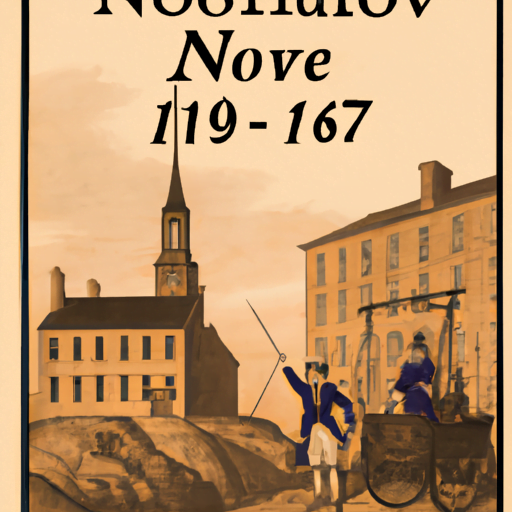From The Story of Dartmouth, by John P. Martin:
The year 1849 was long remembered by residents hereabouts. For one thing, the winter was very severe, and the summer unusually dry. Halifax celebrated its 100th anniversary in June, and by the end of the year was enjoying its first street lighting and water system, and also the first telegraph connection with the United States, via Amherst and Saint John, N.B.
Cold weather seems to have prevailed through most of January and February, without any sign of a thaw. Sub-zero temperatures gradually froze the harbor until the ice extended to Mauger’s Beach on McNab’s Island. Only by keeping a channel open at night, was the ferry able to maintain communication.
The ill-wind of that winter blew somebody good in Dartmouth, because pedestrians and market people no doubt took advantage of the ice-bridge to make uninterrupted journeys to the City. Usually the upper part of the harbor-ice was safer, and according to old residents, the popular landing place at Halifax was on the soft beach near the foot of Cornwallis Street.
On February 11th, the heaviest snowfall in 51 years so completely buried houses in hollow places that inmates had to shovel themselves out through tunnels. All street traffic was at a complete standstill for a full day afterward. Old residents recalled that there was a similar fall of snow and drifts in 1798, and that no mild spell came until April of that year.
Animals inhabiting Dartmouth forests must have been starved out by the storm, for in the deep snow one morning were seen tracks of a large wildcat that had evidently crossed the harbor. A day or two afterward, the ferocious feline was discovered and killed in the cellar of William Grant, Water Street, Halifax.
James Wilson, the Dartmouth distiller, petitioned the Assembly asking that the excise tax on home manufactured spirits be either abolished or collected more systematically. The petition stated, that the heavy tax levied by Nova Scotia was oppressive and caused a great deal of illicit traffic in liquor, much of which was .smuggled here from the United States, He pointed out that the Provinces of Canada, New Brunswick and Newfoundland did not impose an excise tax on such articles.
Here in Dartmouth, the enterprising townspeople were taking advantage of every opportunity to obtain the proposed railway terminus for our side of the harbor. A public meeting, with Andrew Shiels as Chairman and Dr. DesBrisay as Secretary, was held at the Mechanics’ Institute early in February when resolutions were passed pledging the breadth of way required for a railroad to extend through the township of Dartmouth, and making provision for compensating the several landowners.
The Halifax Sun reported that the meeting was “very spirited and numerously attended. Those present pledged themselves as being ready to raise by voluntary tax, their proportion of the amount the Province is required to guarantee”.
The weather that season was the hottest and most oppressive within the memory of the oldest inhabitant. For nearly four months there was scarcely any rain, so that grain and hay scorched on the stalk. On September 2nd, the thermometer rose to 96 at noon, and according to the Nova Scotian, “a dense smoky haze produced by the surrounding fires filled the atmosphere and seemed to belt the horizon. The sun peered with a bloodshot eye through the misty stifling vapor, and beneath its scorching beams everything drooped and withered”.





